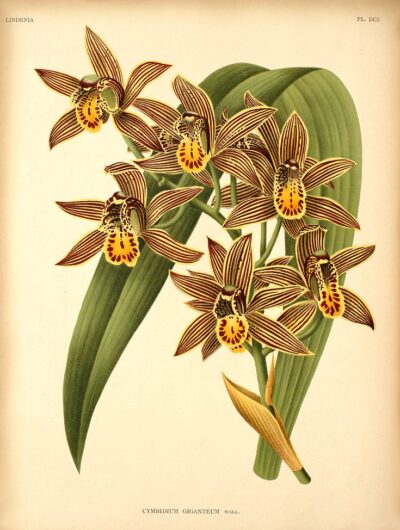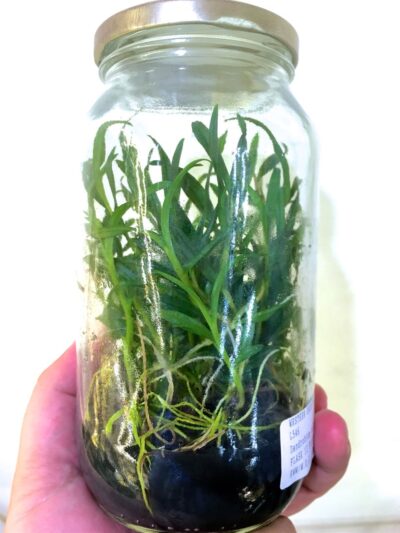Media History
 The first forays by man into the germination of orchid seeds in general used symbiotic, mycorrhizal fungi grown on fungal support media. This was tedious, time consuming and required the extraction, purification and maintenance of cultures of symbiotic mycorrhizal fungi cultures. Successful Orchid tissue culture using fully sterile media formulae (asymbiotic) started in 1922 with Lewis Knudson, one of several teams of experimenters investigating germination [1]. He managed to germinate and grow Cymbidiums using a formula that provided essential, basic macro and micro nutrients with sugar as a carbon source and agar as a setting agent. His formula used calcium nitrate, potassium dihydrogen phosphate, ammonium sulphate, magnesium sulphate and iron citrate.
The first forays by man into the germination of orchid seeds in general used symbiotic, mycorrhizal fungi grown on fungal support media. This was tedious, time consuming and required the extraction, purification and maintenance of cultures of symbiotic mycorrhizal fungi cultures. Successful Orchid tissue culture using fully sterile media formulae (asymbiotic) started in 1922 with Lewis Knudson, one of several teams of experimenters investigating germination [1]. He managed to germinate and grow Cymbidiums using a formula that provided essential, basic macro and micro nutrients with sugar as a carbon source and agar as a setting agent. His formula used calcium nitrate, potassium dihydrogen phosphate, ammonium sulphate, magnesium sulphate and iron citrate.
No consideration was given to the supply of necessary trace elements, but these were probably fortuitously added as impurities in the range of chemicals used. Over time, Knudson made some simple improvements such as adding manganese sulphate and changing the iron salt used. Basically the formula worked, but can these days be compared with a Model T Ford. It was a very, very long way from the high performance vehicles of today which are the products of continuous research and refinement.
Since Knudson’s first formula, there have been very many variations and improvements using a range of chemicals, organics and essential trace elements. Murashige and Skoog developed a media in the 1960’s, while in search of a new plant growth regulator [2]. The salts used in the formula were similar to those originally used by Knudson and still relied heavy on sulphates, nitrates, phosphates and chlorides.
Media Today
Today, most people are using variations of the following tissue culture media:
- Murashige and Skoog Medium (1962)
- Knudson C Medium (1946)
- BM1 & BM2: Terrestrial Orchid Medium (1986)
There are a few others also in use. For the majority of orchid work in labs and by hobbyists, these are the media you will find them using. One thing that is immediately apparent, and probably most readers are unaware of is that these media were developed a long time ago. The work done by these people were very pioneering at the time. However we know a lot more about micropropagation of plants in vitro than we did back then. This is true in most areas of science and technology. So why then you might ask is orchid tissue culture media stuck in time? Well there short answer is it isn’t.
 Our media has been constantly evolving as we get a greater understanding of the germination requirements of orchid species. This has been developed through research and through empirical evidence from results of plants grown in our own laboratory. The reasons why people persist in using such outdated media are probably complex and many. Much of it can simply be attributed to ignorance. An awful lot of research uses MS media. People continue using it based on other’s work, rather than asking the simple question, “Is this the best media for my application?”.
Our media has been constantly evolving as we get a greater understanding of the germination requirements of orchid species. This has been developed through research and through empirical evidence from results of plants grown in our own laboratory. The reasons why people persist in using such outdated media are probably complex and many. Much of it can simply be attributed to ignorance. An awful lot of research uses MS media. People continue using it based on other’s work, rather than asking the simple question, “Is this the best media for my application?”.
There is also a lot of bad science in the world. Growing orchids in vitro is a complicated business, and it’s very easy to come to incorrect conclusions about failures when rigorous scientific process is not followed. For example, it was commonly believed in academic circles within Australia that many species of native terrestrial orchids couldn’t be germinated in vitro and that symbiotic methods had to be used. We would challenge that belief as our process for germination of Australian terrestrial orchids on W9 medium has almost universally been successful when viable seed is used.
But as they say, the proof is in the pudding. Or in this case, in the flask. We use all our own media for laboratory work, and wouldn’t use anything else. We’d like to do a comparison of germination and growth rates on various media in the near future. Until then, we’d encourage you to give our media a try and let us know how well it worked for you.
You can find the full range of media we sell in the store .
[1] Lewis Knudson – https://en.wikipedia.org/wiki/Lewis_Knudson
[2] Murashige and Skoog medium – https://en.wikipedia.org/wiki/Murashige_and_Skoog_medium
